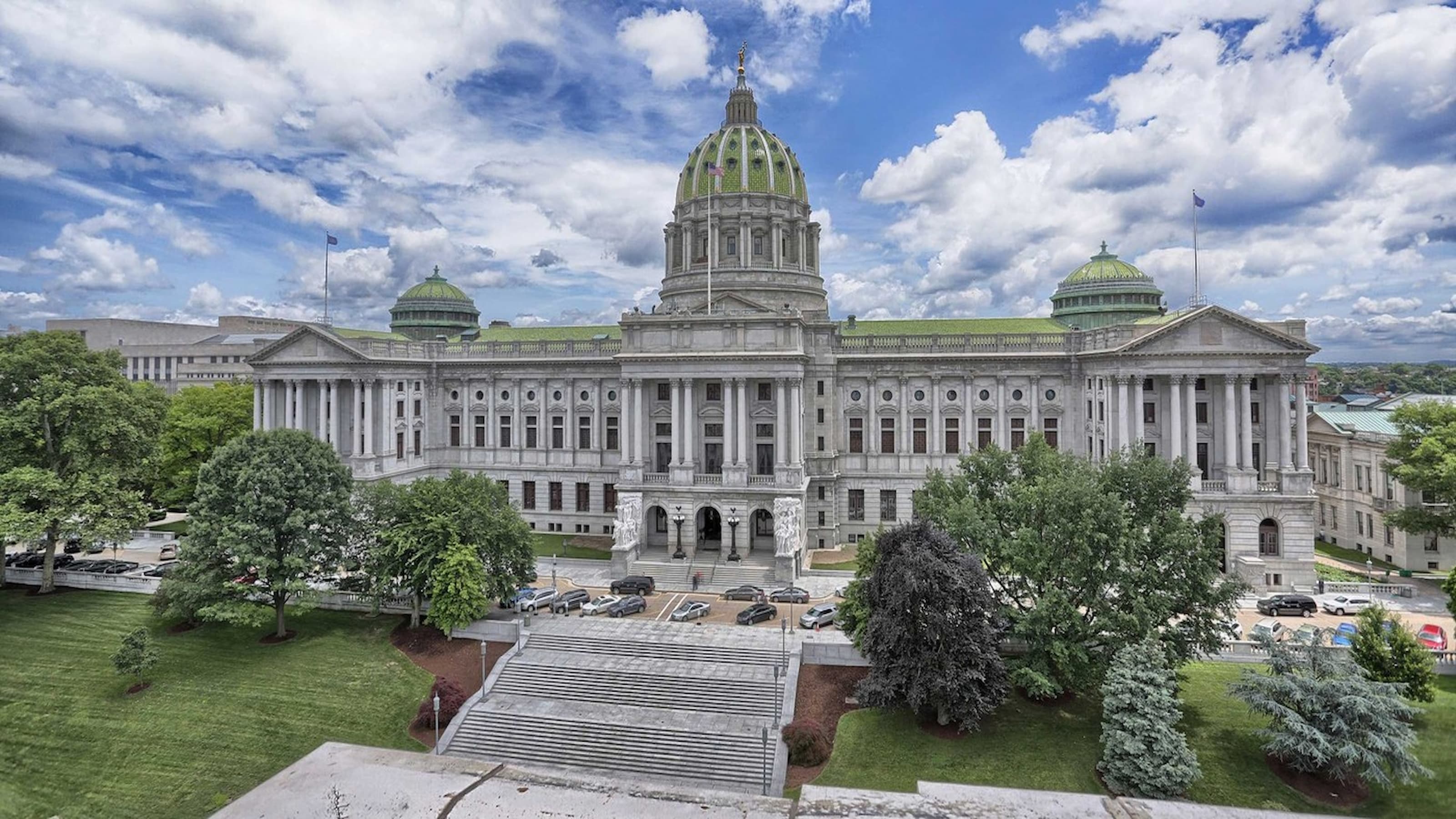The Historic Super Bowl LVII and What it Means for Diversity and Inclusion
Fast forward 35 years from the first Black Super Bowl quarterback, and two Black athletes made NFL history in an unforgettable quarterback matchup. But was Sunday’s roster a sign of change, or does the NFL still have work to do?

This year's Super Bowl made history; not only was this the first time ever that two Black quarterbacks went head to head in the championship game, but it was also the first Super Bowl to follow the establishment of the NFL's Diversity Advisory Committee, created to ensure equal employment opportunities for people of diverse backgrounds in senior-level coaching and office positions.
SJU News spoke with Stephanie Tryce, JD, assistant professor of sports marketing, to explore how far diversity has come in the NFL and how much work still needs to be done.
Can you talk about the history of racial diversity in the NFL?
The NFL’s record of racial exclusion is long and intentional. Early in professional football history there were a few Black players and even one Black head coach, Frederick “Fritz” Pollard. Around 1920, the league began “homogenizing,” as Professor Jeremi Duru describes it. By 1934, all Black professional football players were eliminated from the league.
The reintegration of professional football didn’t occur until 1946. Even then, impetus to reintegrate was not to repudiate racial segregation; instead, it was a mandate of the commissioners of the LA Coliseum as part of their stadium agreement with the Rams.
Diversity and inclusion efforts, like the NFL’s Diversity Advisory Committees, are both an admission by an organization that there is inequity, and an intention to address the problem. All efforts to address historical inequity within organizations and institutions are welcome; however, the existence of diversity committees or a Chief Diversity Officer alone, will not affect change in deeply entrenched inequity.
Institutions tend to want to hold on to their culture. Culture change is difficult, especially when the push for change comes from external pressure.
When did some of those external pressures start to take place?
Twenty one years ago, civil rights attorneys Johnny L. Cochran Jr. and Cyrus Mehri wondered why, in a league where nearly 70% of the players are Black, were there only two Black head coaches. The two then commissioned University of Pennsylvania economics professor Janice Madden, PhD, to study the productivity of head coaches (5 Black, 86 white) over a 15 year period.
Madden’s data analysis revealed that Black coaches outperformed the white coaches in total wins per season, success in the first season and playoff appearances. The study also revealed that Black coaches were fired more quickly than white coaches. As a result of this report, the NFL’s Workplace Diversity Committee, chaired by then-Pittsburgh Steelers owner Dan Rooney, was formed.
From this committee, The NFL’s Rooney Rule was born, which falls in between “hard” diversity initiatives (quotas) and “soft” diversity initiatives (disclosures). The first iteration of the Rooney Rule required traditionally marginalized candidates for a head coaching position in the NFL be given a face-to-face interview with a decision maker.
After 20 years of the Rooney Rule, the NFL has one Black head coach, one Latino head coach and one head coach of Lebanese descent.
Representation matters in so many ways. I believe that when you see it, you can be it.
Stephanie Tryce, JD, assistant professor of sports marketing
We have seen recent expansions to the Rooney Rule to include other on-field and front office positions, females, “draft pick” incentives for being more inclusive (something originally proposed in the draft Rooney Rule but rejected), and a quota requiring at least one member of the offensive coaching staff be an ethnic minority or woman, as this is typically the path to head coaching positions.
Of note is the move to the controversial “quota.” Again, change in institutions where inequity is deeply entrenched is difficult. Pronouncements, policies and initiatives do not necessarily change hearts and minds.
With the addition of an NFL Diversity Advisory Committee, in what ways can we begin to see diverse change happening?
We are seeing some efforts toward more diversity. Females working for the NFL are at its highest levels. The NFL, like other non-sport corporations, is seeing an increase in the hiring of Chief Diversity Officers, though the NFL lags behind corporate American in this regard.
However, what we are seeing in corporate America is great turnover in these positions, as compared to their CEOs. It begs the question, “Why?” Is it a resource issue, lack of authority to strategically engage all parts of the organization, lack of interest/engagement of employees or a combination of all?
These roles are fairly new, so we do not have a long track record to examine success or failure. According to The Institute for Diversity and Ethics in Sport, the NFL earned an overall B in the 2022 Racial and Gender Report Card, with an A+, A- and A- for racial hiring of assistant coaches and in the League Office, and gender hiring for the League Office respectively.
The NFL Teams earned Fs for the racial diversity of owners, and gender hiring for team CEO/president. There were some improvements (C range) in racial hiring of team vice presidents, and racial and gender hiring of team senior administrators.
How much work still needs to be done in terms of diversity in the NFL and other sports leagues? Is appointing a diversity committee enough?
No, it's not enough. I think it's fair to say the NFL did not operate using principles of meritocracy (being hired strictly by one’s talents and abilities) historically. It is fair to question whether the NFL operates using meritocracy today, as it recently appointed an interim head coach with no NFL coaching experience.
With the NFL’s long history of exclusion on the basis of race, sex and ethnicity, I believe the NFL needs to do more than create a diversity committee to move the needle on diversity and inclusion. We must ask, “How do those diversity committees work across teams?”
The NFL may look great in terms of its diversity and inclusion efforts, however, the teams are another story. Each team is its own organization with its own culture. The NFL is organized as a self-governing body, unlike a corporate governance structure. The owners make the rules and they empower the commissioner to impose those rules on the owners.
What do you see as the most challenging aspect moving forward for the NFL?
I believe the most challenging aspect is overcoming the perceptions that your DEI efforts are performative in nature, and not supported to bring about substantive change. This occurs because the NFL has a long history of exclusion, and had 20 years of the Rooney Rule with no real or sustained difference in opportunities. Until there is meaningful and sustained diversity and inclusion, the NFL may be looked at as being disingenuous in its DEI efforts.
Sixty to 70% of the players on the field are Black men, but they're not finding their way through the pipeline to become head coaches.
Stephanie Tryce, JD, assistant professor of sports marketing
Other examples that may cause people to question the sincerity of the NFL diversity efforts are: the accusations of “sham interviews” from coaches like Brian Flores; the conclusion of the U.S. House Committee on Oversight and Reform that the Commanders have a misogynistic and toxic workplace, and until recently, had what some view as a racist mascot; and the settling of a billion-dollar lawsuit where the NFL was accused of using “race norming” tests, which made it more difficult for Black players to qualify for dementia funds. In settling the lawsuit, the NFL admitted to no wrongdoing, but is now using a different test.
Black football players have historically faced challenges in landing quarterback positions in the NFL. What biases have Black athletes had to overcome, and was Sunday's roster a sign of change to come?
Black athletes have to overcome the historical and modern stereotypes that Black athletes are strong physically, but intellectually inferior to the white athletes. According to sociologist Harry Edwards, PhD, when Black players were pushed out of professional football in the 1920s, it was the popular belief that Black players did not have the sophistication to excel in team sports, much less the quarterback position.
There is research that analyzes the language sports commentators typically use to describe Black players — strong, naturally physical, athletic — while white players are described as intelligent, cerebral, technical or brilliant.
Historically, Black football players have been “stacked” in wide receiver and running back positions, considered “workhorse” positions. Those positions typically do not lead to the pipeline to be head coaches.
We can't ignore history, which helps us to understand the source of inequity, which is the first step in crafting a remedy. Are we going to see change in the future? I believe we will see change, as some of these old ways of thinking die, and each new generation demands more equity.
Do you see these changes impacting the careers for students of color and the way that they navigate their career in the sports industry?
Yes, of course. Representation matters in so many ways. I believe that when you see it, you can be it. Once you see a historically marginalized person is a position rarely held by someone from their community, those from that community learn more about their story and their path, which serves as both inspiration and blueprint to what is possible.
Most importantly, inequity hurts everyone in a community, even those historically advantaged in a society. No cultural, systemic, structural or institutional change happens without transformational allies. No movement has ever been successful simply by the determination or resistance of a group that has been historically marginalized. Cultural, systemic, structural and institutional changes are the lasting changes — not one-off initiatives or marketing activity around diversity.
In closing, I do expect to see more diversification in the NFL. We will have to wait and see. However, like James Baldwin’s question on the “wait and see” timeline for progress, I too, wonder, “How long is it going to take?” My lifetime? My child’s lifetime? My grandchildren's lifetime? How much longer?



